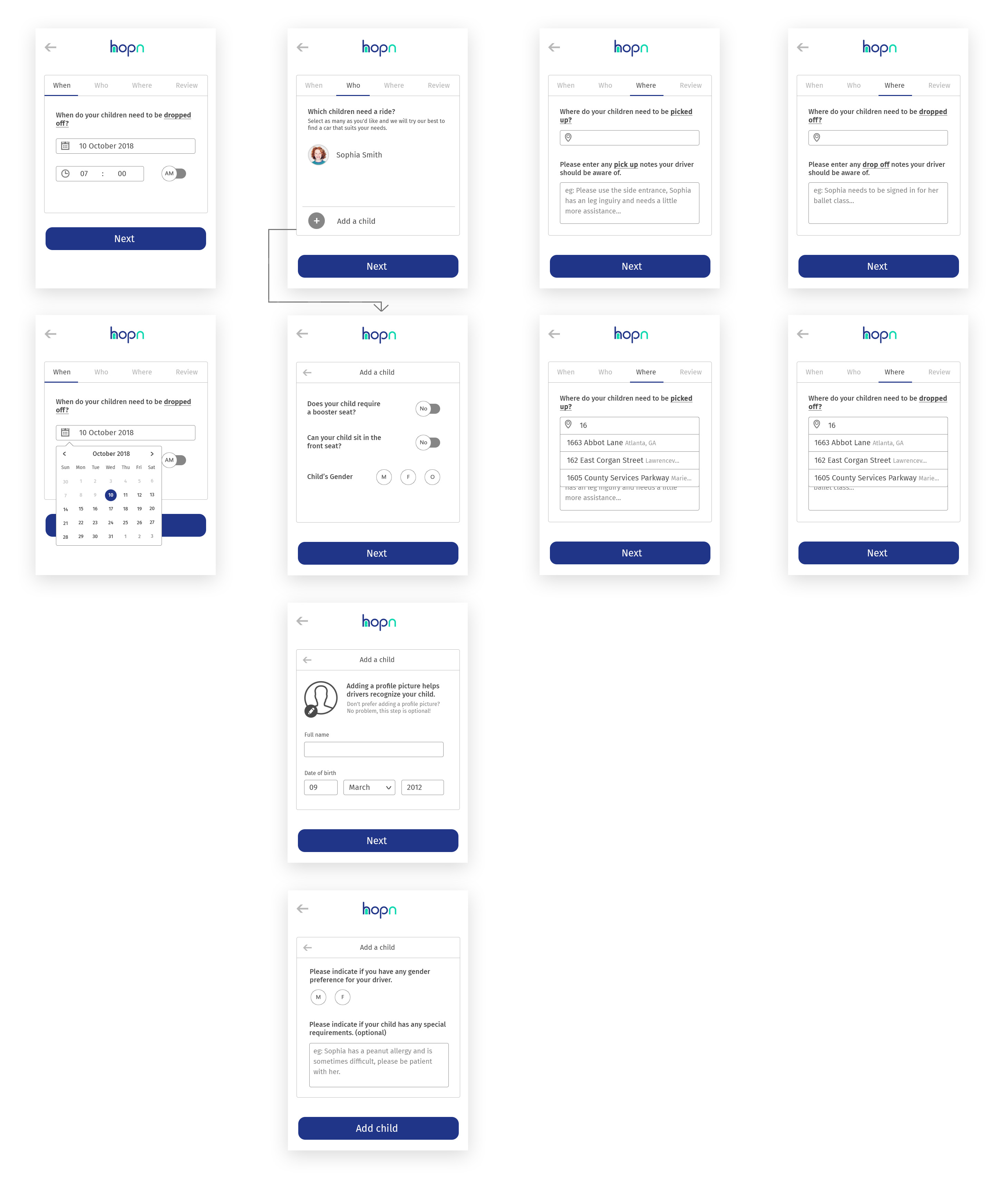Concepts & Testing
After making sense of the data gathered, I wanted to quickly test various design ideas. And so, I created low-fidelity wire frames in the form of paper prototypes for rapid testing. We then conducted a usability test in the form of a cognitive walkthrough with a handful of parents. During the test, parents had to interact with the paper prototypes, talk-a-loud about what they were doing, and were interviewed about their experience. Below are aspects about the system we were testing:
Experience when completing various tasks
(measured mental load using NASA Task Load Index)
Overall IA
(findability and discoverability)
Different dashboard views
The taxonomy of the different ride status’
Part of the conceptualization stage also included a workflow/sitemap of the system as can be seen below:




